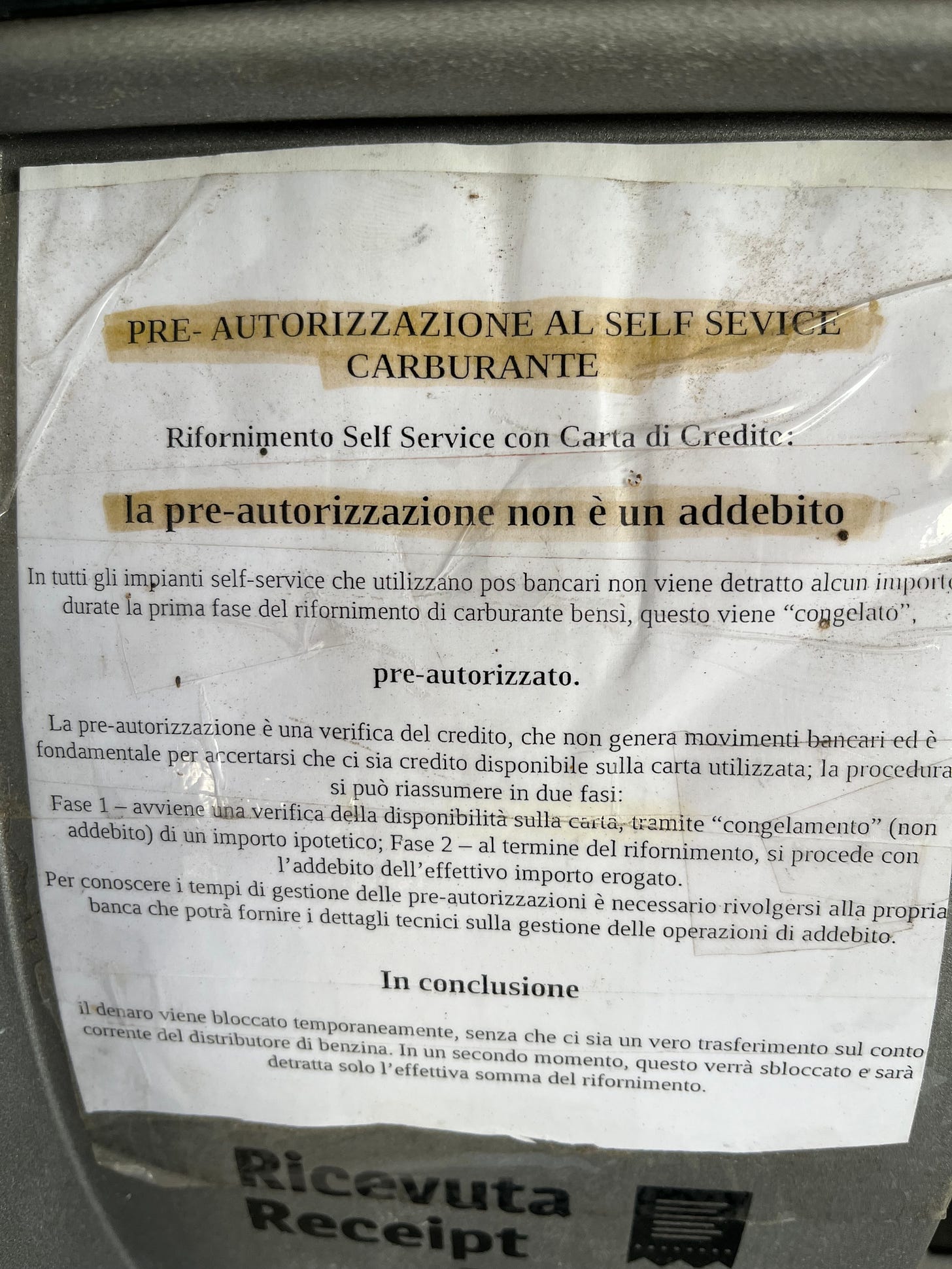Paying At The Pump: Why Auth and Preauth Are Not The Same Thing
And how it affects implementing new payment methods that look "similar" from the outside
Italians were put on Earth to make the most of it.
Beyond pasta and pizza, Italy is known for the reckless driving, the endless coffee variations, and the passionate tifosi di Calcio. But this intensity isn't simply the result of collective craziness. Instead, it responds to a unique approach to life, what Italians call The Dolce Vita, whose sole purpose is to savor life's pleasures.
Food, family, leisure. And only after, function.
Pragmatism is key when making the most of your time on Earth is what ultimately matters. It eliminates stress from your life. It prevents you from achieving more, and from getting things done, but it unlocks new experiences, new pleasures, new opportunities.
My family and I spent the last week in Italy and we experienced this mindset directly.
You might be wondering "why is he telling me about Italy in a payments newsletter?" Well, because this mindset bleeds into how payments, and especially payment failures, are handled in this particular country.
We were in Sardinia, a beautiful island that demands a lot of driving to be enjoyed to the fullest. And, naturally, I had to fill my car's tank.
I was about to pay for the gas when I noticed a piece of paper, Scotch taped on the panel next to the keyboard, where it read:
PRE-AUTHORIZATION FOR SELF-SERVICE FUEL
Fuel Self Service with Credit Card:
Pre-authorization is not a charge
In all self-service stations that use POS bank terminals, no amount is deducted during the first phase of fuel supply, this is "frozen",
pre-authorized.
Pre-authorization is a credit verification that does not generate bank movements and is fundamental to ensure that there is available credit on the card being used; the procedure can be summarized in two phases:
Phase 1 - A verification of availability on the card occurs, through "freezing" (not a charge) of a hypothetical amount; Phase 2 - At the end of refueling, the actual amount dispensed is charged.
To know the timing for managing pre-authorizations, it is necessary to contact your own bank which can provide technical details on the management of debit operations.
In conclusion
The amount is temporarily blocked, without there being a real transfer to the fuel distributor's account. In a second moment, this will be unblocked and only the actual amount of the refueling will be charged.
Most payment engineers I know treat pre-authorizations and authorizations as if they were the same thing.
This is probably the providers' fault. Their APIs don't establish the need for an endpoint to be called preauthorize, or authorize, and engineers are too busy to make out the difference. In the end, most pretend they're authorizing all the time, and forget that the pre- prefix is even there.
But it's there, and it matters.
I'm Alvaro Duran, and this is The Payments Engineer Playbook. Even on holidays, I can't stop thinking about ways engineers who build money software can get better at their jobs. Software that moves money around is serious stuff, but most approach it as if it were any other domain (it's not).n today's article, I'm going to dive deep into this often forgotten aspect of the payment flow: why some payment methods get preauthorized, while others don't.
This article focuses on:
Why gas stations preauthorize, while supermarkets don't
What customers experience when you treat preauth and auth as if they were the same
Why this difference matters online (by looking at 2 popular payment methods)
Why Open Banking doesn’t work in practice
What makes frontend-first payments different from backend-first
Let's dive in.




